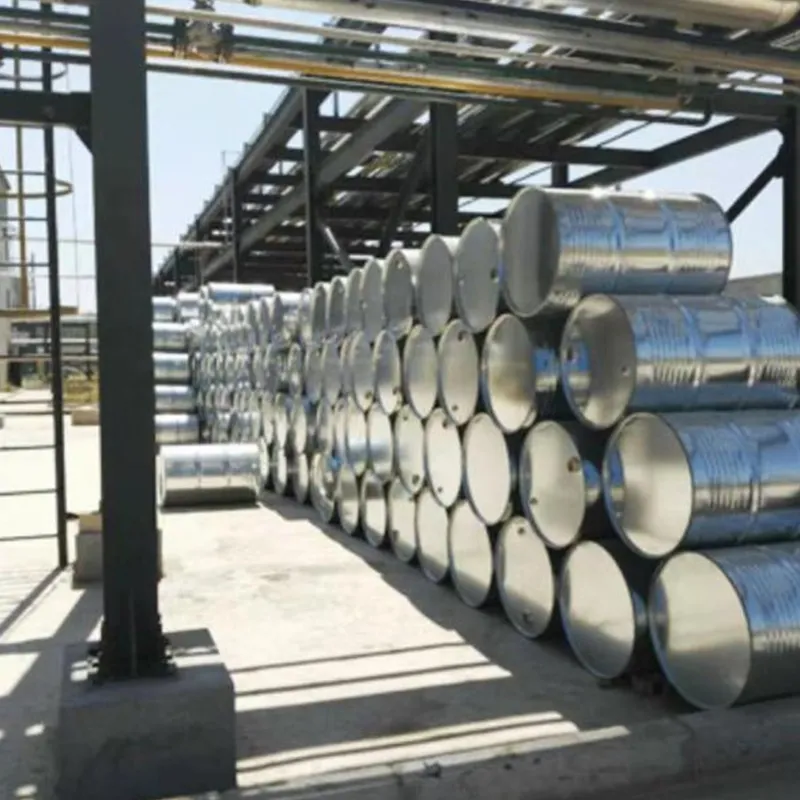
Exploring E954 and Its Role as a Food Additive in Modern Cooking
Understanding E954 The Food Additive with a Sweet Touch
Food additives play a crucial role in the modern food industry, helping to enhance flavors, improve textures, and prolong shelf life. One such additive that has garnered attention is E954, commonly known as saccharin. As a low-calorie sweetener, E954 is frequently used as a sugar substitute in various food and beverage products.
What is E954?
E954 is a synthetic sweetener that belongs to the class of compounds known as artificial sweeteners. Saccharin, the active ingredient in E954, was first discovered in 1879 by a chemist named Constantin Fahlberg. It is recognized for its intense sweetness—approximately 300 to 400 times sweeter than sucrose (table sugar). This extraordinary sweetness allows only a tiny amount of saccharin to impart the desired sweet flavor to food and drinks, making it particularly appealing for those looking to reduce their sugar intake without sacrificing taste.
Uses of E954
The primary use of E954 is in food and beverages labeled as sugar-free. You can find it in various products, including soft drinks, desserts, sauces, and even dairy items. Additionally, saccharin is often used in cosmetic products and pharmaceuticals to enhance flavor. Its low-caloric content makes it popular among diabetics and individuals seeking to manage their weight, as it allows for a sweet taste without the accompanying calories of sugar.
Safety and Controversy
e954 food additive

The use of E954 has not been without controversy. While saccharin was banned in some countries during the late 20th century due to concerns over potential health risks, it has since been cleared for use in many places after extensive reviews. The initial fears were primarily based on early studies in which high doses of saccharin were linked to bladder cancer in laboratory rats. However, subsequent research found that the risk to humans is negligible when consumed within the acceptable daily intake levels set by health authorities.
Organizations such as the Joint FAO/WHO Expert Committee on Food Additives (JECFA) and the U.S. Food and Drug Administration (FDA) have deemed saccharin safe for human consumption, establishing Acceptable Daily Intake (ADI) levels. Reports indicated that, for most people, consuming saccharin within these limits does not pose a health risk.
The Role of E954 in Modern Diets
In an era where health consciousness is on the rise, E954 serves as a beneficial alternative to traditional sweeteners. The growing prevalence of obesity and diabetes has led to increased demand for low-calorie and sugar-free products. Saccharin allows manufacturers to meet this demand while providing consumers with options that do not compromise on taste.
However, it is crucial for consumers to remain informed about the ingredients in their food. While E954 can be a valuable tool for some, it is essential to balance its use with overall dietary choices. Whole foods and natural sources of sweetness, such as fruits, should still be a staple in any healthy diet.
Conclusion
E954, or saccharin, is a fascinating food additive that plays a significant role in our diets today. Its extreme sweetness, low-calorie count, and versatility in food products make it an attractive option for those looking to reduce sugar intake. Despite its controversial history, current research supports its safety when consumed within recommended limits. As with all food additives, informed consumption and moderation are key. Understanding E954 and its applications can help consumers navigate their choices in a modern food landscape rich with options.
-
Nitrile Rubber Honoring Strict Production StandardsNewsAug.22,2025
-
Aspartame Ingredients Honoring Food Safety ValuesNewsAug.22,2025
-
Fertilizer for Balanced Plant NutritionNewsAug.22,2025
-
Cyanide Gold Processing with High Purity AdditivesNewsAug.22,2025
-
Formic Acid in Textile Dyeing ApplicationsNewsAug.22,2025
-
Aluminum Hydroxide Gel in Skincare ProductsNewsAug.22,2025
-
Regulatory Compliance for Global Mining Chemicals UseNewsAug.12,2025
Hebei Tenger Chemical Technology Co., Ltd. focuses on the chemical industry and is committed to the export service of chemical raw materials.
-

view more DiethanolisopropanolamineIn the ever-growing field of chemical solutions, diethanolisopropanolamine (DEIPA) stands out as a versatile and important compound. Due to its unique chemical structure and properties, DEIPA is of interest to various industries including construction, personal care, and agriculture. -

view more TriisopropanolamineTriisopropanolamine (TIPA) alkanol amine substance, is a kind of alcohol amine compound with amino and alcohol hydroxyl, and because of its molecules contains both amino and hydroxyl. -

view more Tetramethyl Thiuram DisulfideTetramethyl thiuram disulfide, also known as TMTD, is a white to light-yellow powder with a distinct sulfur-like odor. It is soluble in organic solvents such as benzene, acetone, and ethyl acetate, making it highly versatile for use in different formulations. TMTD is known for its excellent vulcanization acceleration properties, which makes it a key ingredient in the production of rubber products. Additionally, it acts as an effective fungicide and bactericide, making it valuable in agricultural applications. Its high purity and stability ensure consistent performance, making it a preferred choice for manufacturers across various industries.





